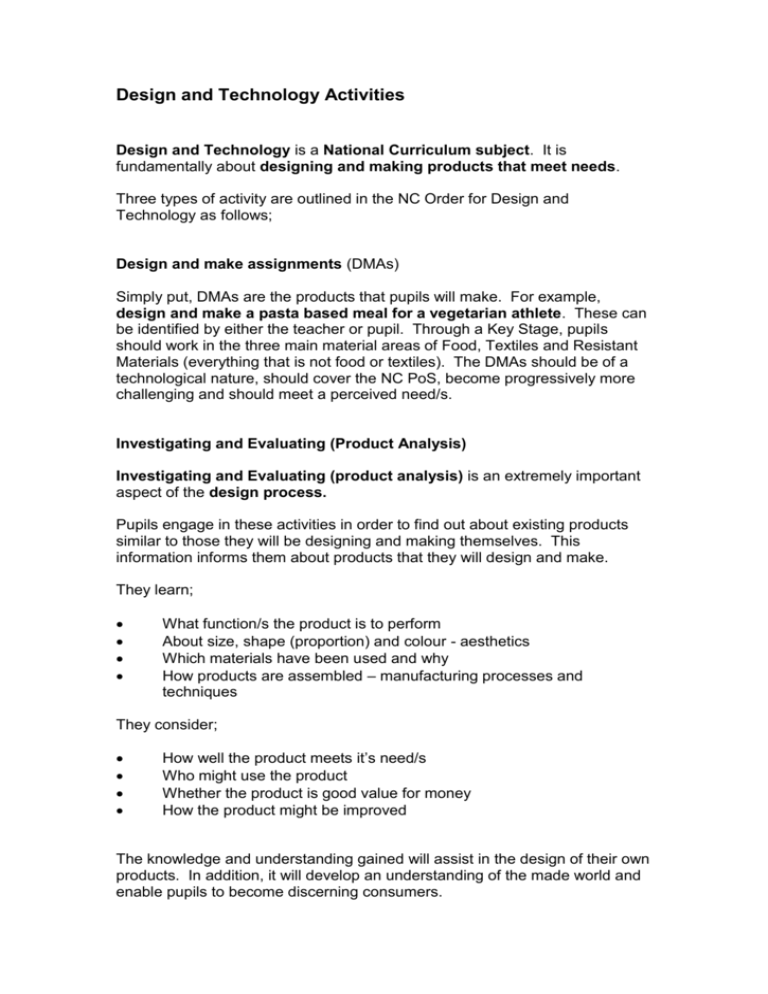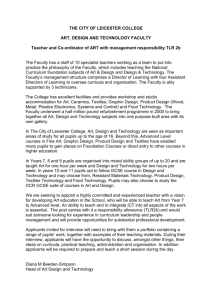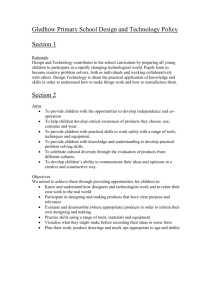Design and Technology Activities
advertisement

Design and Technology Activities Design and Technology is a National Curriculum subject. It is fundamentally about designing and making products that meet needs. Three types of activity are outlined in the NC Order for Design and Technology as follows; Design and make assignments (DMAs) Simply put, DMAs are the products that pupils will make. For example, design and make a pasta based meal for a vegetarian athlete. These can be identified by either the teacher or pupil. Through a Key Stage, pupils should work in the three main material areas of Food, Textiles and Resistant Materials (everything that is not food or textiles). The DMAs should be of a technological nature, should cover the NC PoS, become progressively more challenging and should meet a perceived need/s. Investigating and Evaluating (Product Analysis) Investigating and Evaluating (product analysis) is an extremely important aspect of the design process. Pupils engage in these activities in order to find out about existing products similar to those they will be designing and making themselves. This information informs them about products that they will design and make. They learn; What function/s the product is to perform About size, shape (proportion) and colour - aesthetics Which materials have been used and why How products are assembled – manufacturing processes and techniques They consider; How well the product meets it’s need/s Who might use the product Whether the product is good value for money How the product might be improved The knowledge and understanding gained will assist in the design of their own products. In addition, it will develop an understanding of the made world and enable pupils to become discerning consumers. Focussed Practical Tasks (FPTs) Again, in simple terms, Focussed Practical Tasks are the specific skills and knowledge related to the DMA that pupils should be taught. For example, how to thread a needle, how to weigh out and combine the ingredients of a samosa casing , and how gear wheels interact to control speed etc.



![afl_mat[1]](http://s2.studylib.net/store/data/005387843_1-8371eaaba182de7da429cb4369cd28fc-300x300.png)







